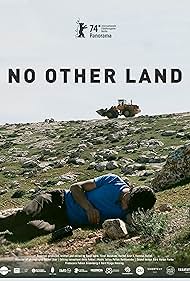This film, made by a Palestinian-Israeli collective, shows the destruction of Masafer Yatta in the occupied West Bank by Israeli soldiers and the alliance that develops between Palestinian activist Basel and Israeli journalist Yuval. Focusing on the relationship at the core of the film is the smartest choice, as it portrays an uneasy and relatable friendship. The attempts of this friendship to stop the Israeli army from destroying a local school, despite facing attacks from soldiers, highlight the importance of solidarity. The film combines dangerous footage shot with a phone, beautifully framed village scenes and historical news reports, creating a powerful mix. While some arguments seem staged, the emotions expressed seem genuine. This mix offers ample time to reflect on the horror depicted, which has only worsened since filming. No Other Land is a crucial documentary, impossible to watch without connecting with the suffering it portrays – a devastating achievement. The filmmakers deftly navigate the complexities of their subject matter, ensuring that the voices of the affected community resonate throughout the narrative. By focusing on individual stories within the broader context of the conflict, they manage to humanize a situation that is often reduced to statistics and headlines. Each character brings a unique perspective, allowing viewers to form a deeper understanding of the personal toll that geopolitical tensions exact on everyday life. In moments of levity amidst despair, the film captures the humanity that persists, even in extreme circumstances. This balance serves as an important reminder of the resilience of the human spirit, showing how laughter, camaraderie, and hope can thrive in the face of adversity. The authenticity of these relationships is especially highlighted during moments of vulnerability, where characters openly share their fears, dreams, and aspirations, in stark contrast to the chaos around them. Cinematography also plays a pivotal role in immersing audiences in the reality of village life under threat. The camera often lingers on the landscape—sun-drenched fields, bustling markets, and the haunting silhouettes of crumbling buildings—evoking a sense of place that is both beautiful and tragic. These images ground the documentary, providing context to the voices and stories that inhabit it. Meanwhile, the chilling soundtrack heightens the emotional impact, weaving scenes together to a haunting melody that lingers long after the end credits roll. It accentuates moments of tension and relief, urging viewers to feel alongside the subjects rather than simply observe them. This multifaceted approach ensures that “No Other Land” doesn’t just inform; it transforms the audience into witnesses, forcing them to confront the harsh realities faced by the people portrayed. Ultimately, “No Other Land” stands as a poignant call to action, imploring viewers to recognize the ongoing struggles of those caught in the crossfire of conflict. It challenges audiences to not only empathize, but to advocate for change, reminding them that awareness is the first step towards solidarity and support. This film is not just a documentary; it is a vital part of the conversation around human rights and social justice, engaging its audience in a way that resonates long after the viewing experience. As the credits fade to black, one can’t help but feel a deep responsibility to share the stories that have been bravely exposed, ensuring that the suffering depicted is not forgotten or ignored.
🚨 Profitez de la livraison gratuite à partir de 150€ d'achats !🚨
- PILOTE
- MOTO
- QUAD
- PNEUMATIQUES
- PADDOCK
- OUTILLAGE
- DIVERS
- Déstockage
Panier
Le panier est vide !
Veuillez ajouter des produits.
-
Bienvenue chez créationsMX-Factory !
- PILOTE
- MOTO
- QUAD
- PNEUMATIQUES
- PADDOCK
- OUTILLAGE
- DIVERS
- Déstockage









































 34/43
34/43